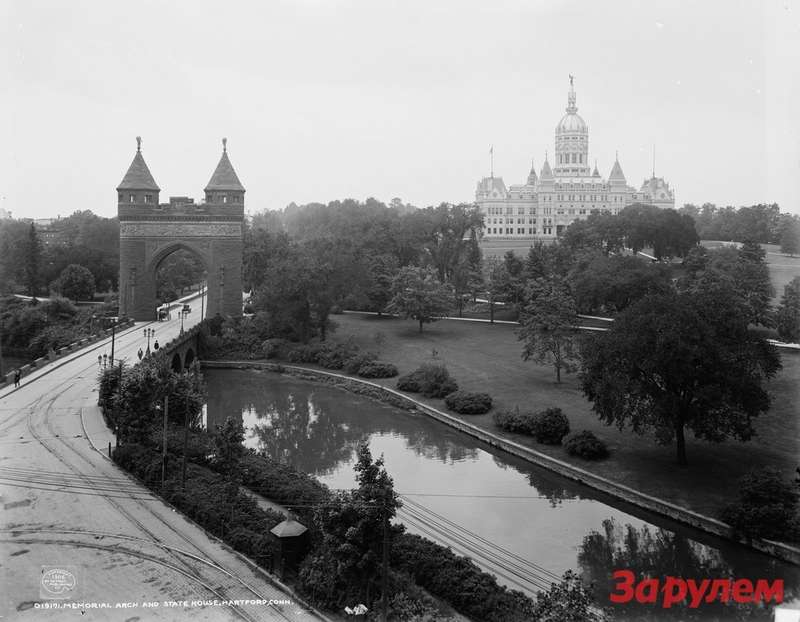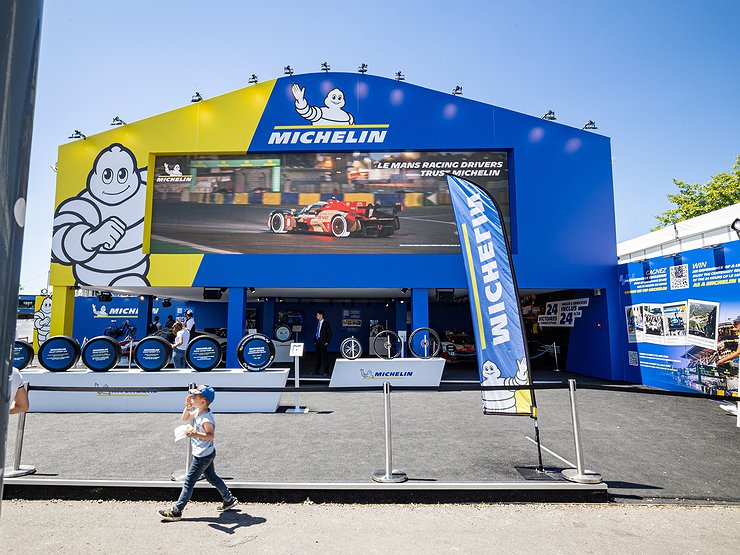
LED lighting is the only way - the right way. OSRAM TEC DAY
Content
The development of the automotive industry goes in different directions. In the case of lighting, for example, we recently used a 6V setup. Then the voltage doubled and more and more powerful halogen light sources began to appear. In the 90s, xenon headlights were a big breakthrough in this area. However, due to the cost of production, they turned out to be a dead end. Today, lighting based on LED technology is increasingly penetrating lower-class cars.
On May 15-16, in Mladá Boleslav, Czech Republic, together with Skoda, a conference was held on the development of automotive lighting called OSRAM TEC DAY.
In the conference hall dedicated to the event, the presenters put two models on stage. Beautiful historic building Skoda Popular Monte Carlo since 1936 and recently debuted i merge. Both cars played their supporting roles in the opening segment of the conference, in which the representatives of the Czech manufacturer briefly boasted about their last year's achievements and outlined the way forward in a few words, paying special attention to lighting issues. This part culminated in a short but touching film showing the history of Skoda Motorsport, the rally car division.
“OSRAM – leader in automotive lighting”
As one advertisement in the early 90s said, there is no need to be afraid of the word OSRAM, because under this name is a company that produces "light bulbs". Today, however, such a definition would be a far-reaching and harmful simplification. The 113-year-old German manufacturer has countless light sources in its portfolio, including those that emit light invisible to the eye (infrared diodes), but used as sensors in the car, allow, above all, safer and even more autonomous driving. . All this makes OSRAM the world market leader in automotive lighting today. This brand, in addition to light sources and sensors for the automotive industry, is also a manufacturer of lighting for special applications (light sources used in medical equipment, in airports and for cleaning surfaces, air and water), entertainment (film projector lamps). , decoration lighting and stage lighting) and offers a wide range of lighting control systems.
As part of TEC DAY, the focus was on automotive topics. The OSRAM brand is active in both the original equipment manufacturer (OEM) and aftermarket (AFTM) markets.
The number of cars equipped with LED light sources is growing every year. It is in this area that the greatest technological progress is taking place. A few years ago, headlights appeared equipped with LED matrices, which, using 82 LEDs, can “cut off” part of the illuminated field so as not to blind drivers in front or ahead of us, while leaving brightly illuminated shoulders. 82 LEDs is a lot, especially compared to one light source from a halogen bulb. However, soon the number 82 will seem ridiculously small, because OSRAM has ready-made light modules consisting of 1024 light pixels. Thanks to this resolution, cutting out fields containing other road users will be more accurate. Future plans also include visions of increasing this value to a level of as many as 25 82 light points! Achieving such figures is possible thanks to miniaturization. Simple 8 point systems use OSLON Black Flat diodes. The technology debuted in the Audi A4 a few years ago, and is now so cheap that it's starting to find its way into popular models. It will be equipped with the updated Skoda Superb. Higher resolution modules use LEDs such as EVIYOS, on which a printed circuit board with a side of only 1024 mm can accommodate the mentioned 1024 points of light. It is not like the OSLON Black Flat family - individual LEDs and one LED divided into pixels.
Miniaturization is not accidental. Obviously, more points of light would be easier to place on a larger surface. However, the requirements of companies that want to freely shape the headlights of their models make such a goal for lighting manufacturers. However, reducing the size while increasing the number of light points creates another problem. This is a significant release of heat. Limiting this is a challenge that engineers face when using more and more modern silicon optical fibers. The popularization of "LEDs" means that the unit price of an LED is constantly decreasing.
The engineers at OSRAM are aware that there will be fewer and fewer conventional light bulbs on the market, but they are still actively developing this technology as well. The goal in this regard is no longer to increase lamp power, but to increase efficiency, improve contrast and reduce production costs and therefore the prices of end products. Recently, new types of H18 and H19 lamps have been introduced to the market. The first replaces the H7 type, the second is the most popular H4 variant. They consume 3 W less energy, shine up to 25% longer and, most importantly, give at least 20% more light. They cannot be used as a replacement for the headlights originally fitted to the H7/H4, but are products that the headlight designer can choose to reduce the size of the headlight.
XLS, czyli interchangeable light source
LED light sources, the equivalent of traditional glass lamps, have been on the market for a long time. Unfortunately, legal aspects do not allow us to legally use them in our cars. OSRAM has found two solutions.
The first is XLS technology - that is, interchangeable light sources. Although LEDs last many times longer than light bulbs, it is not uncommon, for example, to find older Volkswagen Passat models whose taillights do not illuminate the entire turn signal or the entire circle of the parking light. These lights cannot be dismantled, and the only way to fix them is to replace the entire dome. The new generation Toyota Corolla, which has just been introduced to the market, is the first vehicle to feature XLS LED taillights. New models will soon follow in her footsteps. OSRAM encourages manufacturers to expect their sub-suppliers to prepare lamps that allow XLS sources to be used when upgrading current models. Thanks to this, each user will be able to buy a standardized diode and replace it himself - if necessary.
The second development path is the use of retrofits, i.e. the adaptation of new lamps with traditional bulbs to LED light sources. Technically, this is possible with both front and rear lights, but the law prohibits the use of LED replacements instead of standard solutions on public roads. OSRAM is also taking action in this case and is presenting the LEDriving RETROFIT replacement to the headlight manufacturers. Using them during design in a headlamp and complying with the requirements set out in the ECE standard may allow approval for a given headlamp type for either a halogen lamp or an LED replacement. Today, this is only a suggestion, and time will tell if the solution will be applicable in practice.
The same applies to the rear lights. Here, an additional pro argument is the fact that the LEDs immediately receive their full luminous flux, so that, for example, a brake light is visible noticeably faster, which translates into a real increase in safety. It is estimated that the driver in the rear will notice the brake light coming from the LED source so much faster that the entire braking process will be completed 3-5 meters earlier, which is a lot.
Many manufacturers have already chosen to use retrofit sources for interior and fog applications such as interior lighting, storage space or trunk, including the PSA, Subaru, Toyota, Volkswagen and Volvo groups.
LED equivalents of traditional light bulbs are now available for individual users. Unfortunately, although they can greatly improve driving comfort at night by offering much better lighting, their use is prohibited by law, which means they can only be used when driving off-road.
The future belongs to lidar systems and more and more sensors
The field of activity of OSRAM engineers in the automotive industry goes beyond the traditional concept of light sources. This German company also produces most of the sensors that are installed on our new vehicles. Both those on the outside, which allow the use of active cruise control or a lane keeping system, and those installed inside, monitor driver fatigue and analyze the direction of his attention.
The next step in this area is the use of combined technologies: LiDAR systems based on laser diodes, infrared (IR) LEDs and SMARTRIX LED arrays with EVIYOS diodes. Together, all these devices will make the interaction of the car with the environment much grayer. They cooperate by interpreting each other's data. The LiDAR system makes it possible to detect objects in space in 3D even in bad weather conditions. Thanks to this solution, the system can see where cars, game and pedestrians are. Together with the radar, the speed of these objects is determined, and the use of the camera allows you to superimpose colors and detect signs.
Thanks to the interaction of all these systems, it will also be possible, for example, to eliminate the effect of auto-dazzle by reflecting traffic lights on passing signs. The system will read the sign in advance, and the EVIYOS LED headlight will not only extinguish the area of the sign so that it does not reflect too much towards the driver, but - most importantly - will display information from this sign in front of the car on the road.
These are just examples of the possibilities of technology that will appear in cars in a few years, after appropriate refinement. One thing is certain. The development of automotive lighting has never been as fast as it is now, and it will only get better in the future. Let only reliability keep pace with innovation.
Skoda Museum
Behind the wall, or rather behind the walls of the conference hall where TEC DAY takes place, is the Skoda factory museum. During the breaks between lectures, one could get acquainted with the history of this one of the oldest automobile brands, which is already 117 years old. It all started with bicycles and motorcycles. Then came the cars.
The exhibited part of the museum collection may not be very large, but it is very diverse. Both cars that we associate with our roads and models of the interwar period are presented. There are also interesting prototypes that make you wonder, what happens if Volkswagen gets along with the unions from Geran and invests in the FSO? There is also a modest rally exhibition and a few showcases where you can follow, for example, the evolution of the winged arrow trademark.
A separate room is dedicated to the "workshop", which shows the process of restoration of the historic Skoda in several stages.
Being in the Czech Republic, in the northern part of Prague, you should definitely visit this place and appreciate the rich history of the most powerful car brand in our part of Europe.

